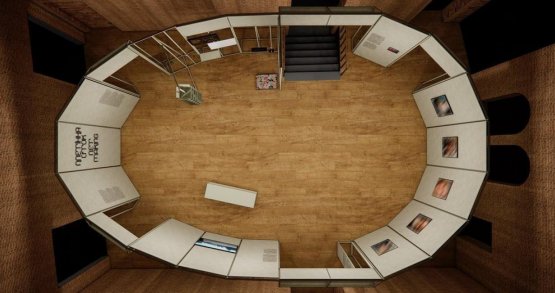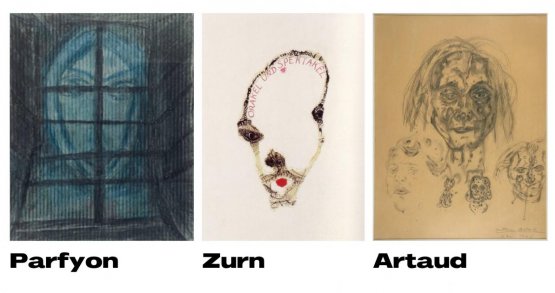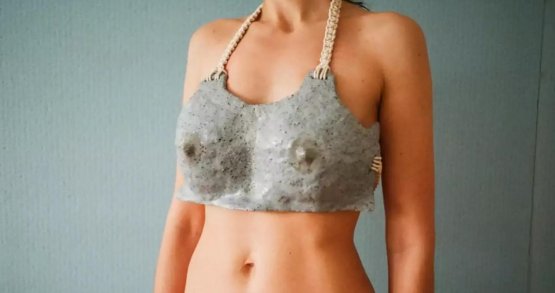Still recognizing how challenging each of these films is for the viewer's endurance, one may chance to consider them as a pair: "20 Days in Mariupol" by journalist, director, and writer Mstyslav Chernov, and "Civilians. Invasion" by artists Daniil Revkovskyi and Andrii Rachynskyi. The former won this year's BAFTA and Academy Awards in the Best Documentary category, and the latter will represent Ukraine in the national pavilion at the 60th Venice Biennale. Coinciding in the chronology of the first days of Russia's full-scale invasion of Ukraine, the films speak of the war in two different languages and through different lenses. The first is the language of an Associated Press journalist at the center of events, equipped with the SONY A7SIII camera and the SONY FE 24-240mm F/3.5-6.3 lens. Substantial parts of Chernov's video footage become television news, spread all over the channels, and the original files are attached to cases handled by international courts. The latter are now popular footage, often of low quality, shot with smartphone or dashboard cameras that distort the image and sound. The footage in this film is courtesy of several authors who uploaded it online, and Revkovskyi and Rachynskyi collected and edited it into a single work.
The two films, both of which show people in a deadly environment from the inside, manifest common patterns of behavior and tropes of catastrophe narration. The cameraman becomes a figure relied upon in the most difficult moments, and the camera that continues to film offers hope for communication with the outside world. In one of the "20 Days in Mariupol" scenes, a doctor loudly addresses everyone in the hospital room, saying that filming is important now and urging them not to stop. And the cameraman himself needs the doctors and their infrastructure: power generators in the operating rooms are the source of energy and connection, providing the capacity to recharge batteries and transfer files to the news media. The handing over of material proving the crimes is a concern shared by the filmmaker and the people featured in the film.
The film "Civilians. Invasion" also offers the cameraman a chance to be seen as a messenger of hope. A man standing in the courtyard between high-rise buildings in a residential suburb addresses the person holding a smartphone: "Film it! Get it on camera, bro!" and bumps his fist in encouragement. Both the doctor in "20 Days in Mariupol" and the citizen in "Civilians. Invasion" perceive Russians as the primary target audience of the video footage. The former wants Putin to see the eyes of a wounded child in intensive care, and the latter says: "[Film it], so that the motherfuckers know about it." They share the opinion that the footage on the spot must convince and stop the aggressor.
Another Road Beside the Peace Avenue
1 april, 2024
However, it is not the Russians in the comfort of their homes who are the first and foremost witnesses to the suffering, but the Russian military that comes to seize the city. Cameramen with cameras in hand find themselves on the moving line of military confrontation, while the camera is literally confronted with the weapon. Not least because it is closely related to weapons. "There is no war without photography, that notable aesthete of war Ernst Jünger observed in 1930, thereby refining the irrepressible identification of the camera and the gun, "shooting" a subject and shooting a human being. War-making and picture-taking are congruent activities," Susan Sontag observed in her essay "Regarding the Pain of Others." A smartphone camera lens in "Civilians. Invasion" fatally collides with the muzzle of a Kalashnikov pointed at the cameraman by a Russian soldier on an IFV. The first scene in "20 Days in Mariupol" begins with Yevhen Malolietka's camera looking out the hospital window onto the street. Russian tanks arrive in front of the building. The tank turret slowly turns toward the photo and video cameras. To avoid a direct confrontation between guns and lenses, the journalists and the policeman acting as a fixer quickly leave the premises.
Whatever similarities cameras and guns may have, they are pitted against each other in an unequal struggle for documentation, for evidence, for a sight that can influence the actions of those outside the situation — in contrast to outright killings and “mopping-up” operations, which leave no room for human stories other than the killers' evasive mutterings about "this is how it happens historically.”
Whatever similarities cameras and guns may have, they are pitted against each other in an unequal struggle for documentation, for evidence, for a sight that can influence the actions of those outside the situation — in contrast to outright killings and “mopping-up” operations, which leave no room for human stories other than the killers' evasive mutterings about "this is how it happens historically.”
After watching the two films, one can also see their main differences: an amateur video shot with a shaking hand and an international TV report with proper credits are extreme forms of representing events, like the raw and the cooked in documentary filmmaking. Taken together, however, they prevent the overuse of one of possible narratives and help us better understand the distances built up by the authors and where viewers of both films stand in relation to the actual events.
Mstyslav Chernov, Yevhen Malolietka, and Vasylisa Stepanenko arrived in Mariupol just before the invasion, aware of the impending large-scale war. During the film's premiere in Kyiv, Chernov said that information had been the most important basic resource keeping society united. Food and water could have been unavailable for a longer period of time, but the news was a backbone that held back a larger-scale disintegration. With information gone, people were possessed by hearsay, suspicion, and doubt. It is impossible to put it all together; the dynamic of the destruction of the old world is too fast, yet the director takes on the role of the storyteller. In "20 Days in Mariupol", Chernov narrates in the first person, telling a story about people and the camera that "will not let you forget."
The director in this story is not only a narrator who uses editing, sound design, and bass lines in the film's creation. He is also the author of the diary, which reveals him and leaves room for criticism in his own address: some of the city residents do not support his work and accuse him of information "prostitution." Chernov also preserves the scene with the faulty advice to go home because "they do not shoot at civilians," which he gives to a woman on the street to reassure her. Behind the camera, the main character (the witness) is alive and constantly changing. These changes transcend his previous years of experience as a war correspondent and, in certain scenes, reach metaphysical heights — quick cuts of sand running through his fingers emphasize these shifts in consciousness. The camera also pauses occasionally — it is lowered several times while continuing to shoot, in some cases to avoid showing the faces of the military or to run from place to place, but also to capture the director's pause in the surrounding horror. In these moments, the camera does not record anything specific but shows the background of pauses that are somehow more important than words and images. They show the vulnerability of a strong person.
Daniil Revkovskyi and Andrii Rachynskyi call their film an "encyclopedia of horror". To make this movie, they spent much time searching for and watching about five thousand videos from different cities and towns in Ukraine. With this volume of evidentiary material, in a landscape soaked in death, there is space both for reaching the metaphysical editing and for scenes and words that (strangely enough) retain the elements of laughter (mainly through off-screen comments by eyewitnesses) and even meme potential. The chronicle of the invasion in the film by Revkovskyi and Rachynskyi begins with the fall of the main Christmas tree of Mariupol on the square in front of the regional drama theater on December 20, 2021. The scene of the fall of the tree was captured by a surveillance camera. In a few weeks, on March 16, 2022, huge warning letters "ДЕТИ" ("Children" in Russian) will be written here, the theater will be shelled with aerial bombs. The Christmas tree falls again, like the MacGuffin of Ukrainian history, a thing that binds events together. There could be a rewind here: on December 03, 2010, ex-president Viktor Yanukovych, trying to explain why public gatherings of citizens and New Year celebrations are incompatible, for 10 seconds, could not remember the Ukrainian word "yalynka" ("Christmas tree") and said "yolka" (the Russian for Christmas tree). This word becomes part of the slang of the civil protests on the Maidan. Going back more in time: on May 17, 2010, Yanukovych, together with Russian President Dmitriy Medvedev, visited the Memorial of Glory in Kyiv, where, because of strong wind, the wreath made of fir tree branches fell on him. Earlier, on April 21, 2010, Yanukovych and Medvedev signed an agreement on the presence of the Black Sea Fleet of the Russian Federation on the territory of Ukraine until 2042. In 2014 it will allow Russia to quickly occupy Crimea and start the war against Ukraine. Here, we can also mention the movie "La Palisiada" by Philip Sontychenko about the 1990s in Ukraine, for which the actor Yarema Malashchuk jokingly offered the logline: "Did you laugh at Yanukovych?". Memes and catastrophes often merge, giving each other whimsical characteristics.
When someone eerily becomes part of a meme, it is a different kind of horror. "Is there another road here, besides Prospekt Myru ("Peace Avenue" in Ukrainian)?" — asks a driver trying to leave besieged Mariupol. The harrowing escape, filmed by the dashboard camera that recorded these words, reveals the inner workings of language's disintegration. This scene could have been fictional, a metaphor, or a poetic commentary on events. But here it is real: the inherited Soviet toponymy show the sarcastic dimension of the evacuation. The Avenue of Peace, named in honor of the so-called "friendship of peoples," remains the only road available at a historical moment when one nation does not recognize the otherness of another and commits genocide against it.
The characters in both films sometimes adapt to the reality of the media. In "20 Days in Mariupol," they speak Ukrainian to the camera and immediately switch to English to leave a message for the outside world, and their appeal is recorded. By adding fragments of television news to the film sequence, the director duplicates the footage he shot in two modes, creating a situation of distant optics, while his own material becomes part of the stories of distant narrators. The film "Civilians. Invasion," which captures the everyday language of the invasion in a less selective way, also tends towards genre in some episodes. It can be a report with an interview of eyewitnesses, when a girl with a toy microphone asks her neighbor in the shelter: "How do you feel during the war?"; or a food blog, when "the most delicious granny cakes" are baked over a fire in a brick oven in the yard of the house; or a live broadcast of a survival scene, when the cameraman flees from the shelling with a group of people and manages to film himself, commenting for an imaginary viewer: "This is how we live."
"20 Days in Mariupol" and "Civilians. Invasion" reveal the panoramas of survival in the human apocalypse with its most terrible crimes: the continuing deaths of children and the targeted shelling of a maternity hospital are the core of Chernov's film; the crimes in the film by Revkovskyi and Rachynskyi build up to the shelling of graves and the final scene at the ruined cemetery. All the cameras that were able to be in these places before the outbreak of the full-scale war quickly changed direction in the hands of their owners in order to leave the besieged and occupied territories. These cities were left almost without witnesses.
The article was prepared thanks to the support of the Fachbereich Kultur und Geschichte des Bezirksamtes Friedrichshain-Kreuzberg. Lost Cause series of articles was developed in a framework of the project LOST CAUSE: A Series of Events Exploring Future Perspectives for Preserving Cultural Heritage that was held at the Friedrichshain-Kreuzberg Museum Berlin.
Mstyslav Chernov, Yevhen Malolietka, and Vasylisa Stepanenko arrived in Mariupol just before the invasion, aware of the impending large-scale war. During the film's premiere in Kyiv, Chernov said that information had been the most important basic resource keeping society united. Food and water could have been unavailable for a longer period of time, but the news was a backbone that held back a larger-scale disintegration. With information gone, people were possessed by hearsay, suspicion, and doubt. It is impossible to put it all together; the dynamic of the destruction of the old world is too fast, yet the director takes on the role of the storyteller. In "20 Days in Mariupol", Chernov narrates in the first person, telling a story about people and the camera that "will not let you forget."
The director in this story is not only a narrator who uses editing, sound design, and bass lines in the film's creation. He is also the author of the diary, which reveals him and leaves room for criticism in his own address: some of the city residents do not support his work and accuse him of information "prostitution." Chernov also preserves the scene with the faulty advice to go home because "they do not shoot at civilians," which he gives to a woman on the street to reassure her. Behind the camera, the main character (the witness) is alive and constantly changing. These changes transcend his previous years of experience as a war correspondent and, in certain scenes, reach metaphysical heights — quick cuts of sand running through his fingers emphasize these shifts in consciousness. The camera also pauses occasionally — it is lowered several times while continuing to shoot, in some cases to avoid showing the faces of the military or to run from place to place, but also to capture the director's pause in the surrounding horror. In these moments, the camera does not record anything specific but shows the background of pauses that are somehow more important than words and images. They show the vulnerability of a strong person.
Daniil Revkovskyi and Andrii Rachynskyi call their film an "encyclopedia of horror". To make this movie, they spent much time searching for and watching about five thousand videos from different cities and towns in Ukraine. With this volume of evidentiary material, in a landscape soaked in death, there is space both for reaching the metaphysical editing and for scenes and words that (strangely enough) retain the elements of laughter (mainly through off-screen comments by eyewitnesses) and even meme potential. The chronicle of the invasion in the film by Revkovskyi and Rachynskyi begins with the fall of the main Christmas tree of Mariupol on the square in front of the regional drama theater on December 20, 2021. The scene of the fall of the tree was captured by a surveillance camera. In a few weeks, on March 16, 2022, huge warning letters "ДЕТИ" ("Children" in Russian) will be written here, the theater will be shelled with aerial bombs. The Christmas tree falls again, like the MacGuffin of Ukrainian history, a thing that binds events together. There could be a rewind here: on December 03, 2010, ex-president Viktor Yanukovych, trying to explain why public gatherings of citizens and New Year celebrations are incompatible, for 10 seconds, could not remember the Ukrainian word "yalynka" ("Christmas tree") and said "yolka" (the Russian for Christmas tree). This word becomes part of the slang of the civil protests on the Maidan. Going back more in time: on May 17, 2010, Yanukovych, together with Russian President Dmitriy Medvedev, visited the Memorial of Glory in Kyiv, where, because of strong wind, the wreath made of fir tree branches fell on him. Earlier, on April 21, 2010, Yanukovych and Medvedev signed an agreement on the presence of the Black Sea Fleet of the Russian Federation on the territory of Ukraine until 2042. In 2014 it will allow Russia to quickly occupy Crimea and start the war against Ukraine. Here, we can also mention the movie "La Palisiada" by Philip Sontychenko about the 1990s in Ukraine, for which the actor Yarema Malashchuk jokingly offered the logline: "Did you laugh at Yanukovych?". Memes and catastrophes often merge, giving each other whimsical characteristics.
When someone eerily becomes part of a meme, it is a different kind of horror. "Is there another road here, besides Prospekt Myru ("Peace Avenue" in Ukrainian)?" — asks a driver trying to leave besieged Mariupol. The harrowing escape, filmed by the dashboard camera that recorded these words, reveals the inner workings of language's disintegration. This scene could have been fictional, a metaphor, or a poetic commentary on events. But here it is real: the inherited Soviet toponymy show the sarcastic dimension of the evacuation. The Avenue of Peace, named in honor of the so-called "friendship of peoples," remains the only road available at a historical moment when one nation does not recognize the otherness of another and commits genocide against it.
The characters in both films sometimes adapt to the reality of the media. In "20 Days in Mariupol," they speak Ukrainian to the camera and immediately switch to English to leave a message for the outside world, and their appeal is recorded. By adding fragments of television news to the film sequence, the director duplicates the footage he shot in two modes, creating a situation of distant optics, while his own material becomes part of the stories of distant narrators. The film "Civilians. Invasion," which captures the everyday language of the invasion in a less selective way, also tends towards genre in some episodes. It can be a report with an interview of eyewitnesses, when a girl with a toy microphone asks her neighbor in the shelter: "How do you feel during the war?"; or a food blog, when "the most delicious granny cakes" are baked over a fire in a brick oven in the yard of the house; or a live broadcast of a survival scene, when the cameraman flees from the shelling with a group of people and manages to film himself, commenting for an imaginary viewer: "This is how we live."
"20 Days in Mariupol" and "Civilians. Invasion" reveal the panoramas of survival in the human apocalypse with its most terrible crimes: the continuing deaths of children and the targeted shelling of a maternity hospital are the core of Chernov's film; the crimes in the film by Revkovskyi and Rachynskyi build up to the shelling of graves and the final scene at the ruined cemetery. All the cameras that were able to be in these places before the outbreak of the full-scale war quickly changed direction in the hands of their owners in order to leave the besieged and occupied territories. These cities were left almost without witnesses.
The article was prepared thanks to the support of the Fachbereich Kultur und Geschichte des Bezirksamtes Friedrichshain-Kreuzberg. Lost Cause series of articles was developed in a framework of the project LOST CAUSE: A Series of Events Exploring Future Perspectives for Preserving Cultural Heritage that was held at the Friedrichshain-Kreuzberg Museum Berlin.
To read more articles about contemporary art please support Artslooker on Patreon
Share:







